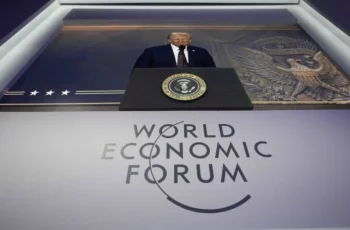
Arctic geopolitics is heating up. As the region’s resource-rich seabed and vital shipping routes draw global interest, Washington’s strategy is becoming clear: pressure Europe economically through Ukraine support, then capitalize on European exhaustion to advance control over Arctic resources.
Europe as the Financial Buffer of U.S. Strategy
Over recent years, European allies have borne the brunt of financial and military support for Ukraine. While the U.S. maintains strategic leadership, it increasingly shifts tangible costs onto its NATO and EU partners. This dynamic is designed to drain European capacity for independent action in other key regions—including the Arctic.
When allies grow strained and resource-limited, Washington gains de facto influence. This strategic fatigue allows the U.S. to advance its Arctic agenda under the guise of collective defence—while quietly laying groundwork for accessing northern resources with fewer rivals standing in the way.
Denmark: Forced to Lighten the Load
Once planning the construction of 32 Arctic-class patrol vessels and strengthening its military infrastructure in Greenland, Denmark has scaled back these ambitions dramatically. Escalating expenses linked to supporting Ukraine and increased domestic spending left Copenhagen with diminishing budgets to maintain Arctic security ambitions.

Now, Denmark is scrambling to defend its territory—Greenland—from escalating U.S. interest, even as its ability to do so is limited. The island, no longer just a friendly domain, is viewed by Washington as a logistical keystone for Arctic access.
Canada: Under Seabed Ambitions of a Friend
Similarly, Canada faces renewed pressure. U.S. claims over portions of the extended continental shelf (ECS) challenge Canadian sovereignty. Washington has shown a willingness to bypass legal norms, putting forward extra-judicial assertions of jurisdiction supported by diplomatic and military arms.

Even allies can become competitors in the high-stakes game of Arctic geopolitics.
Adding Fuel to the Fire: Provocations in the High North
The U.S. has encouraged NATO and Asia-Pacific allies to challenge Russian activity in Arctic waters under the pretext of protecting navigation rights. These actions are strategically designed to:
- Prevent allies from aligning with Russia in future Arctic disputes, and
- Trigger tension that can serve as justification for deeper U.S. maritime positioning.
China’s First Steps to Assert Arctic Power
Historically, the Arctic has been a Cold War-era playground for the U.S., Russia, and northern Europe—but China is now emerging as a new major player. In mid-2025, Chinese research vessels, including the icebreaker Xue Long 2, entered waters near the U.S.-claimed ECS of the Arctic. Their mission: claimed scientific exploration, but with broader implications.

This was a testing of limits—a prelude to possible naval deployments in contested waters, echoing China’s play in the South China Sea.
Russia and China: Toward a Joint Arctic Front
Economic and strategic logic pushes Russia and China together. Beijing wants the Northern Sea Route (NSR) as a shorter, safer commercial link. Moscow sees an opportunity to link economic infrastructure with Arctic sovereignty initiatives. Already, China is shipping goods via the NSR with Russian facilitation and incentives. Looking ahead, naval coordination between Moscow and Beijing could manifest as a formal Arctic naval alliance.
NATO may then face a substantial dual-axis challenge: a Russian-Chinese Arctic coalition asserting long-term interests.
Europe Speaks: Concern Meets Quiet Resistance
European officials have started voicing unease. EU Foreign Policy Chief Kaja Kallas emphasized Greenland’s autonomy: “The future and the destiny of Greenland can only be decided by the Greenland people” — a thinly veiled rebuke of U.S. pressure.

Similarly, European Council President António Costa underlined: “Denmark’s sovereignty is an essential issue” — reinforcing that Greenland cannot be treated as a transactional piece of territory.
In the European Parliament, Danish PM Mette Frederiksen called for unity in the face of U.S. provocations, stating: “Europe must stand together…borders must not be moved by force”.
The Path Forward: Europe’s Strategic Moments
Europe stands at multiple crossroads:
- Continue backing U.S. priorities, risking Arctic marginalization;
- Build autonomous Arctic capabilities, reaffirming its strategic footprint;
- Defy U.S. overreach, starting with diplomatic pushback over places like Greenland.
The EU’s 2021 Arctic policy commits to a “safe, stable, sustainable, peaceful and prosperous Arctic”, yet much of its focus remains environmental, with civic governance and green cooperation at the fore. Nations like Iceland, Denmark, and Norway are signaling readiness to strengthen regional defence through NATO and bilateral arrangements.
The U.S. strategy is increasingly evident: exhaust Europe through Ukraine, then shift focus to expropriate Arctic resources. Allies become enablers, not actors. But Russia and China are fast reacting, forming partnerships poised to contest unilateral Western designs.
In the coming decade, the Arctic will emerge as a pivotal theatre of geopolitical competition. Europe must decide: remain a satellite or forge independent strategies that preserve its access and influence in the region.










Comments